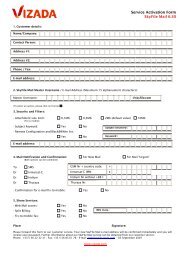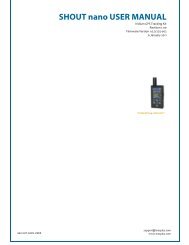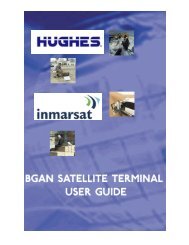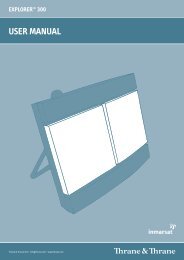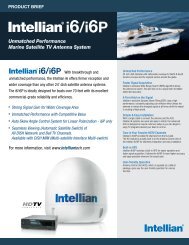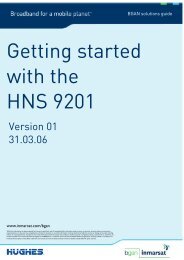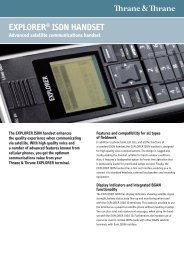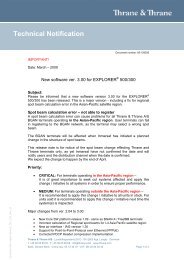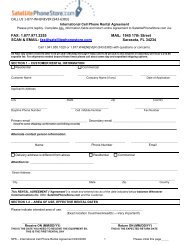Create successful ePaper yourself
Turn your PDF publications into a flip-book with our unique Google optimized e-Paper software.
APPENDIX A - SYSTEM OVERVIEW CONT’DSystem satellitesThe satellites are positioned in a geostationary orbitabove the equator at approximately 35700km altitude.See figure A-2.In geostationary orbit, each satellite moves at thesame rate as the earth, and so remains in the samerelative position to the earth.The satellites provide 99% landmass coverage.Nera WorldPro can communicate via the three satelliteOcean Regions:F1 Indian Ocean RegionF2 Atlantic Ocean RegionF3 Pacific Ocean RegionThe coverage area of the satellites for Nera WorldPro(BGAN) is shown on the Satellite coverage map, seeearlier in this manual. Communication is possible in areasmarked with brown and reddish brown (light greyand grey when printed in black), indicating spotbeamcoverage.Transmission frequenciesThe Inmarsat BGAN terminals operate in the followingL-band frequencies:MES transmission frequencies:1626.5 MHz - 1660.5 MHzMES receiving frequencies:1525.0 MHz - 1559.0 MHzA-2F2 54°W35700 kmAtlantic Ocean RegionFigure A-2Satellite positions.F3 178°EPacific Ocean Region12000 kmEQUATOREARTHIndian Ocean RegionSAS (Satellite Access Station)USER GUIDEF1 64.5°ETwo SAS stations cover both the IOR and AOR-E satelliteregions. See figure A-3.The SASs provide the interface to the internationalnetworks for telephony and data: PSTN (PublicSwitched Telephone Networks), PSDN (PacketSwitched Data Networks) and Mobile TelephoneNetworks.EXPLORER <strong>100</strong>/<strong>110</strong>



